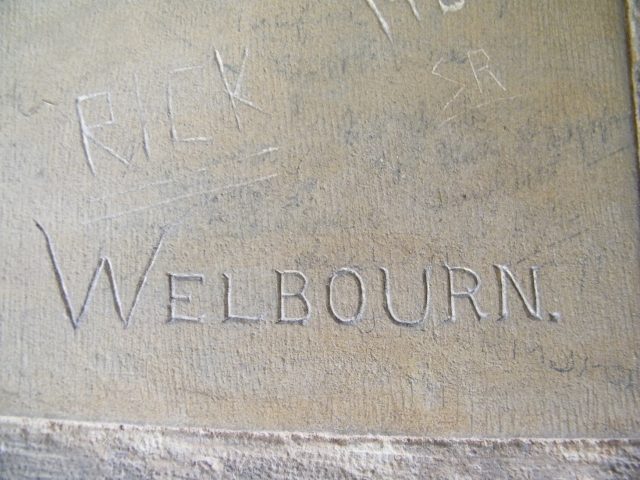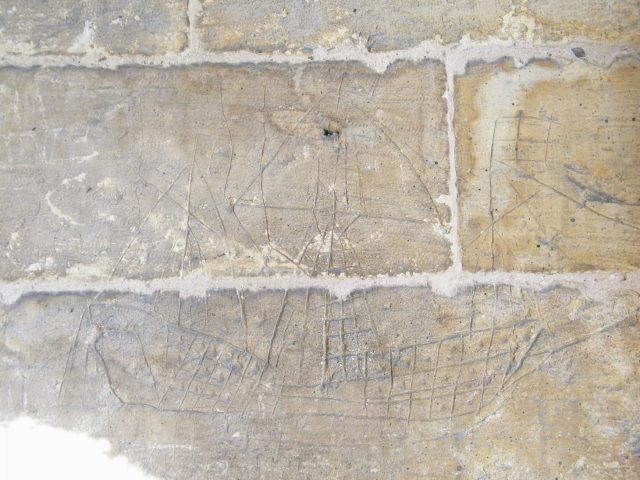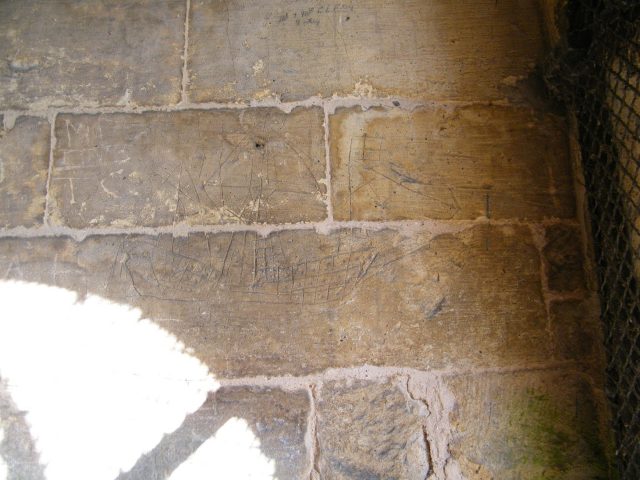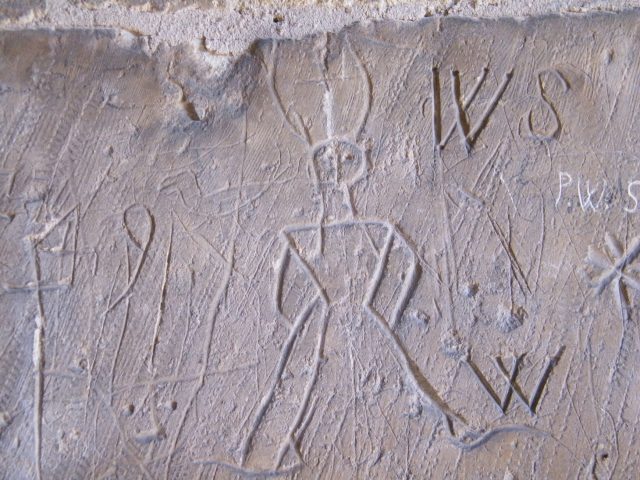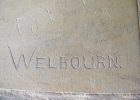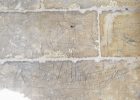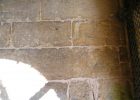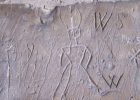Welbourn Graffiti
Graffiti in St Chad’s Church, Welbourn
While the monuments and decorations inside churches can tell us much about the past of a community, almost without exception, these were created by or for a small percentage at the top of society; the parish elite that could afford to have themselves memorialised. The scratches that can be found elsewhere in the walls, however, can be read as a record of the poorer members of the community and, if studied can give us an insight into the life, loves and fears of our ancestors, of ordinary people.
Perhaps surprisingly to us, graffiti in medieval churches is far from uncommon and as many of the more elaborate examples probably took many hours to execute, the length of time taken to create them does rather suggest that they couldn’t have been carried out without the full knowledge of the local church itself – and with at least their tacit approval. A far cry from the official view of graffiti today, especially where religious establishments are concerned.
The porch of St Chad’s church contains examples of such graffiti. Amongst the most striking are a ship, a horned figure, and the word Welbourn itself, etched deep into the stone.
Ships are a commonly encountered symbol and are thought to have been made as pleas for a safe voyage, as thanks to God for a completed one, or supplications for the safe return of long overdue vessel – although, with Welbourn being so far from the sea, with it prominently flying the St George’s cross, this might also be a public celebration of some particular naval enterprise that locals were aware of.
Could the deeply carved word Welbourn be, as personal names might be carved to ask a blessing for an individual, an invocation for good fortune for the whole community? And while the horned figure depicted is not pinned to the wall by a pentacle, as in so-called ‘demon traps’ found in other churches, it could indeed be being transferred into the walls and thus the hands of God, for protection. Faintly alongside the horned figure is the image of a bird. Could this be, as we are told there exist elsewhere inscriptions praying for a good harvest, a plea for protection for animal stock, or for a supply of fresh meat in a time of hunger?
Obviously we will never know for sure but it is not us that was ever meant to know, it was between the person who scratched the image and the one to whom they made their appeal.

